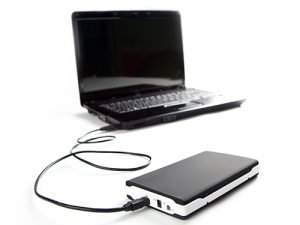Strategic sourcing is a process that reduces costs across all expenditure categories. By improving supplier selection, it lowers supply risks. Pricing and forecasting visibility can also be enhanced by strategic sourcing. When strategic sourcing software is combined with a digital business network, productivity increases, supplier risks are reduced, and money is saved.
For example, CDL-training programs are an alternative for those who want to get a CDL license but don’t want to pay the exorbitant tuition costs. Data gathering, market research, expenditure analysis, negotiation, and contracts are part of the strategic sourcing process. It does not include the actual purchase of goods and services.
Strategic sourcing can be tailored to a customer’s particular requirements. The main objective is to increase profitability by using a single and integrated system. The traditional purpose of strategic sourcing is to find and reward a provider who best satisfies the company’s needs. In addition, strategic sourcing has been proved cost-effective and a game-changer in 2020. Companies have had to rebuild their supply networks to suit the demands swiftly. Following are the three critical steps for strategic sourcing success.
1. Evaluate, Collect Data and Build a Strategy
The first step is to conduct a systematic and coordinated assessment of your sourcing requirements. Evaluate, collect data and build a strategy consist of the following steps:
Developing and strengthening supplier connections
Make sure you have the right relationships with your vendors. The goal is to learn about any significant initiatives that are coming up shortly. This step includes innovations or growth plans, for which you can appropriately plan.
Analysing expenditures
Complete a comprehensive analysis of how much your company spends. It includes determining what and where expenditures are finished. It also includes areas where spending may be improved.
Validating the project
Determine whether you need a new supplier for the category or not. You also have to determine if you can renegotiate the terms or not. In this way, you can validate the project.
Obtaining information
To gather the information and requirements, you will need the following:
• Existing supplier contracts, including terms and conditions
• Work Statement
• Analysis of the Supply Market
• Spending information gleaned from your spending analysis
Planning for the project.
In this, you have to create a project strategy that outlines the scope and complexity of your project. It also includes the sorts of providers you will need during the project.
2. Research and Award your Supplier
When looking for possible award winners, keep the following points in mind:
Communication abilities
To select the winner, you have to find some things like how has your supplier’s communication been thus far? Are they willing and capable of responding to your inquiries? Is it handled over the phone, by email, or via an online portal? It might be a bad sign if you cannot get in touch with the provider throughout the tendering process.
Operation of suppliers
In this, you have to examine whether your selected provider can meet your needs in the short and long term.
Finances
In this category, you have to find that the provider you have picked financially is stable and profitable? What is the total amount of debt they owe? Consider giving a shorter-term contract as a trial if their financial position does not appear to be ideal.
Supply chain
In the supply chain, you have to question the supply chain of the suppliers. Are they strong enough to keep them afloat if things go wrong? Would the supply chain of one of your suppliers be able to handle an increase in the volume of a particular item? Look into if they can address short-term needs. Short-term needs include unseasonably warm weather or unforeseen events.
Competency
In this, you have to compare the capabilities of the provider to your requirements. Speak with account managers or other representatives from the potential provider. Inquire about their ability to deliver under unusual situations. The unique conditions include harsh weather or raw material shortages.
Following a thorough examination of all of the above, a clear winner is determined. Once you have decided, send a “Commitment Go Document” to the supplier and internal stakeholders. Commitment Go Document should include the following information:
• Award proposals
• Implementation plans
• Financial benefit estimates
• Communication to senior management
• Contract considerations

3. Contract Implementation
To develop a communication strategy, you will need to collaborate with your new customers. It is done for implementing the latest products for your company. The relationship’s possible hazards should be recognized and then addressed with adequate compliance procedures.
These agreements are subsequently formalized by a contract that is signed. Previously, this was a time-consuming process that necessitated reams of paperwork. Today, technology can produce contracts automatically based on pre-prepared data uploaded into the system. Targets should be established and tracked to hold suppliers accountable.
Finally, you are ready to hand over control of the provider to the appropriate individuals inside your company.







